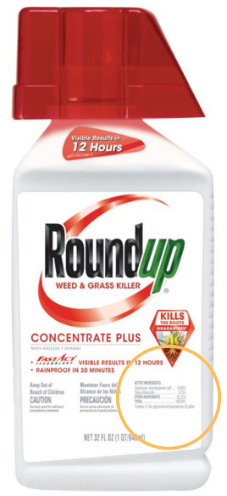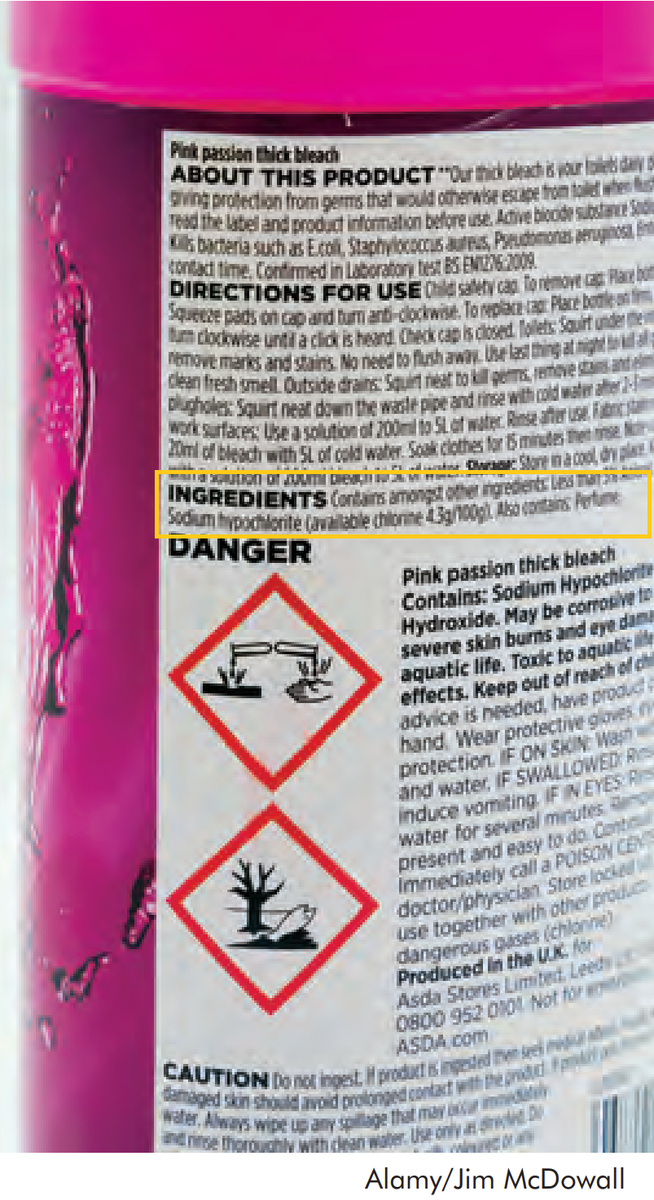Gateway on Pesticide Hazards and Safe Pest Management
How To Find Ingredients in Pesticide Products
Beyond Pesticides offers resources below to evaluate the health and ecological effects of specific chemical exposure from ACTIVE INGREDIENTS in pesticide products, as well as regulatory information and supporting scientific documents. Because various pesticide products can contain more than one active ingredient, it is important to READ the LABEL to determine chemical components.
With 192 different active ingredients and counting, it is essential to establish the connection between the use of these chemicals and their respective hazards.
View the step-by-step guide on how to search for the active ingredient(s) in pesticide products below:
- Go to U.S. EPA's Pesticide Product and Label System and enter the product name. The generic product name may vary.
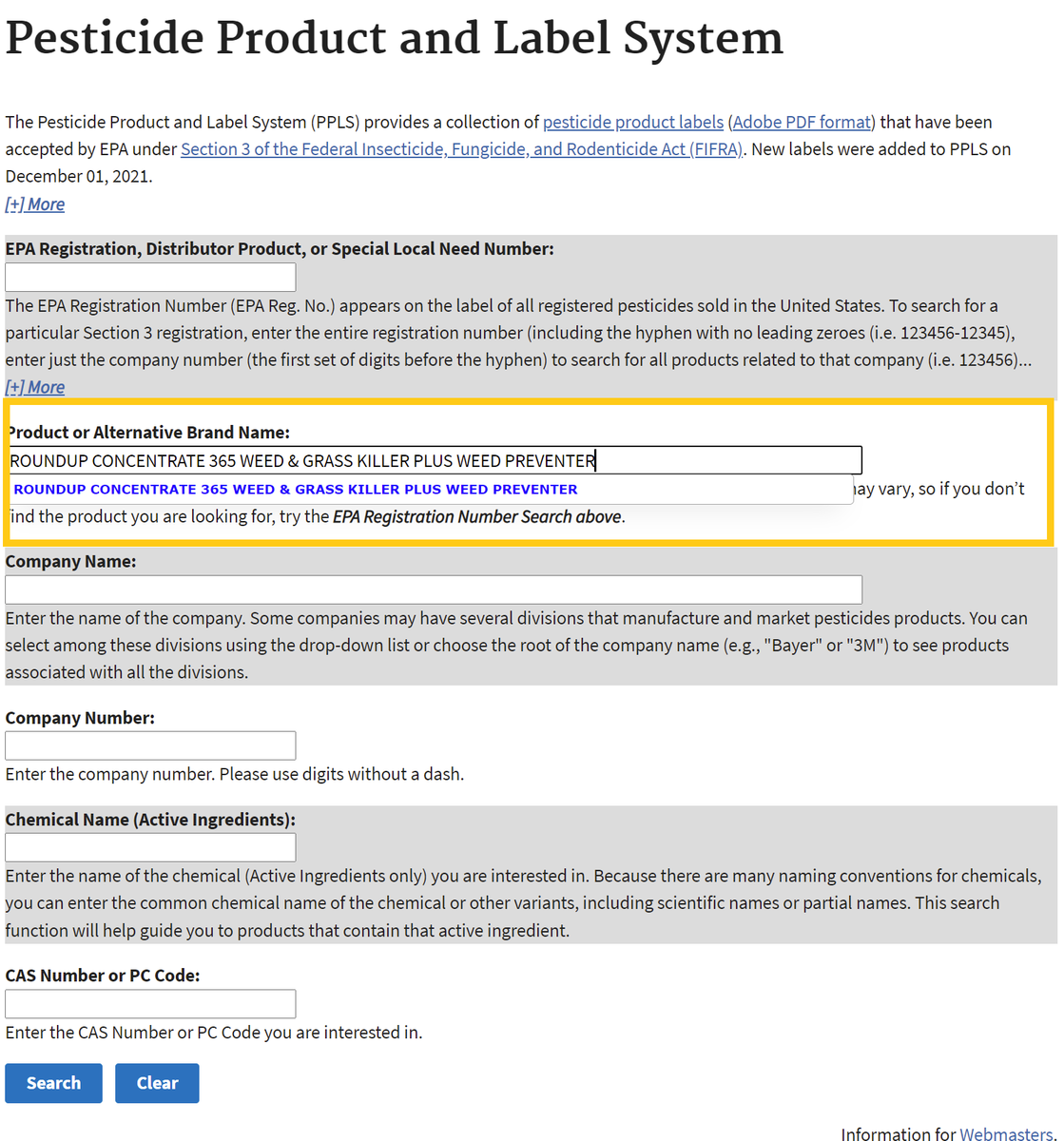
- After searching, click on the chemical ingredients tab or the link for the most recent label to find Active Ingredients.
Chemical List Label List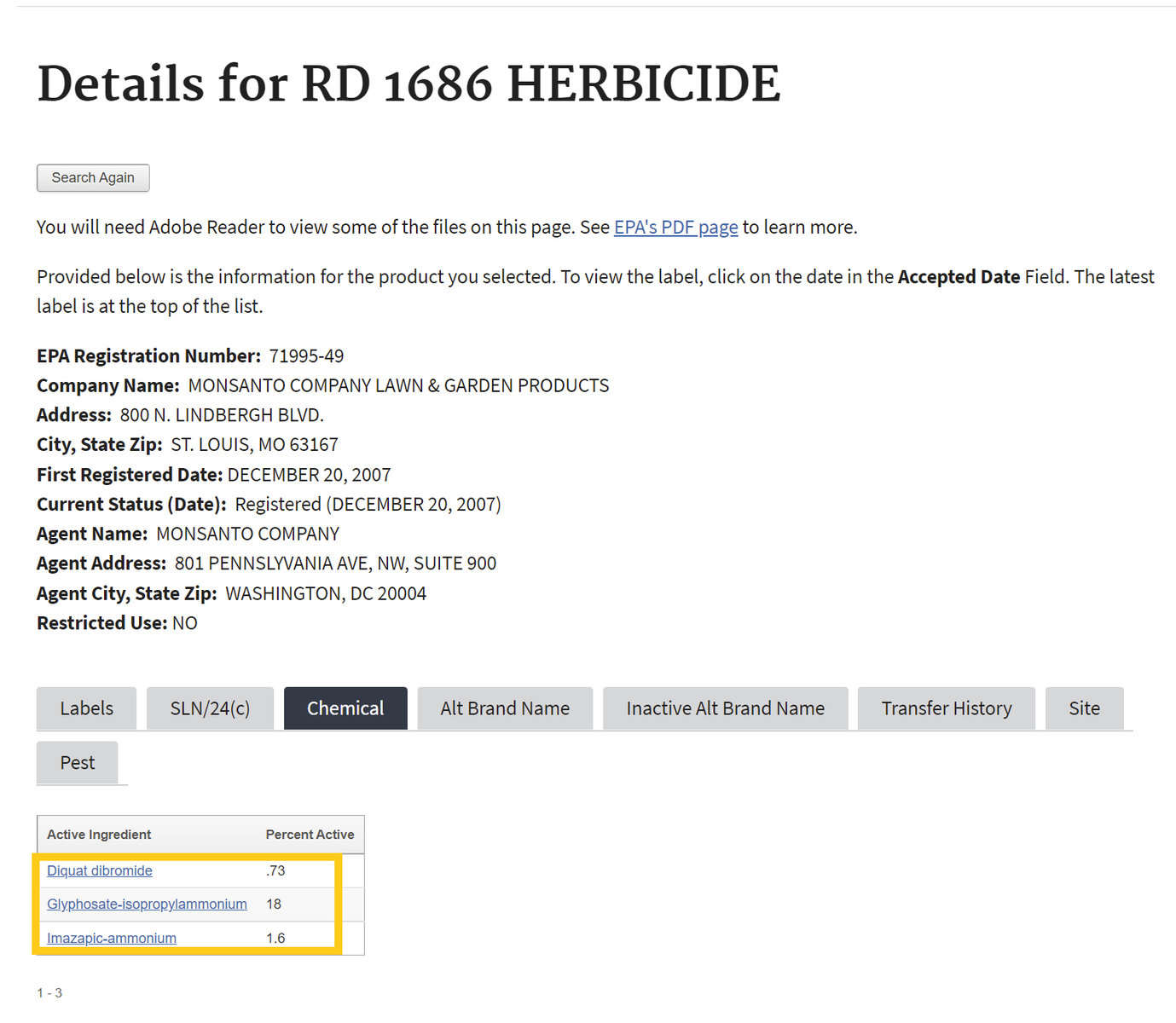
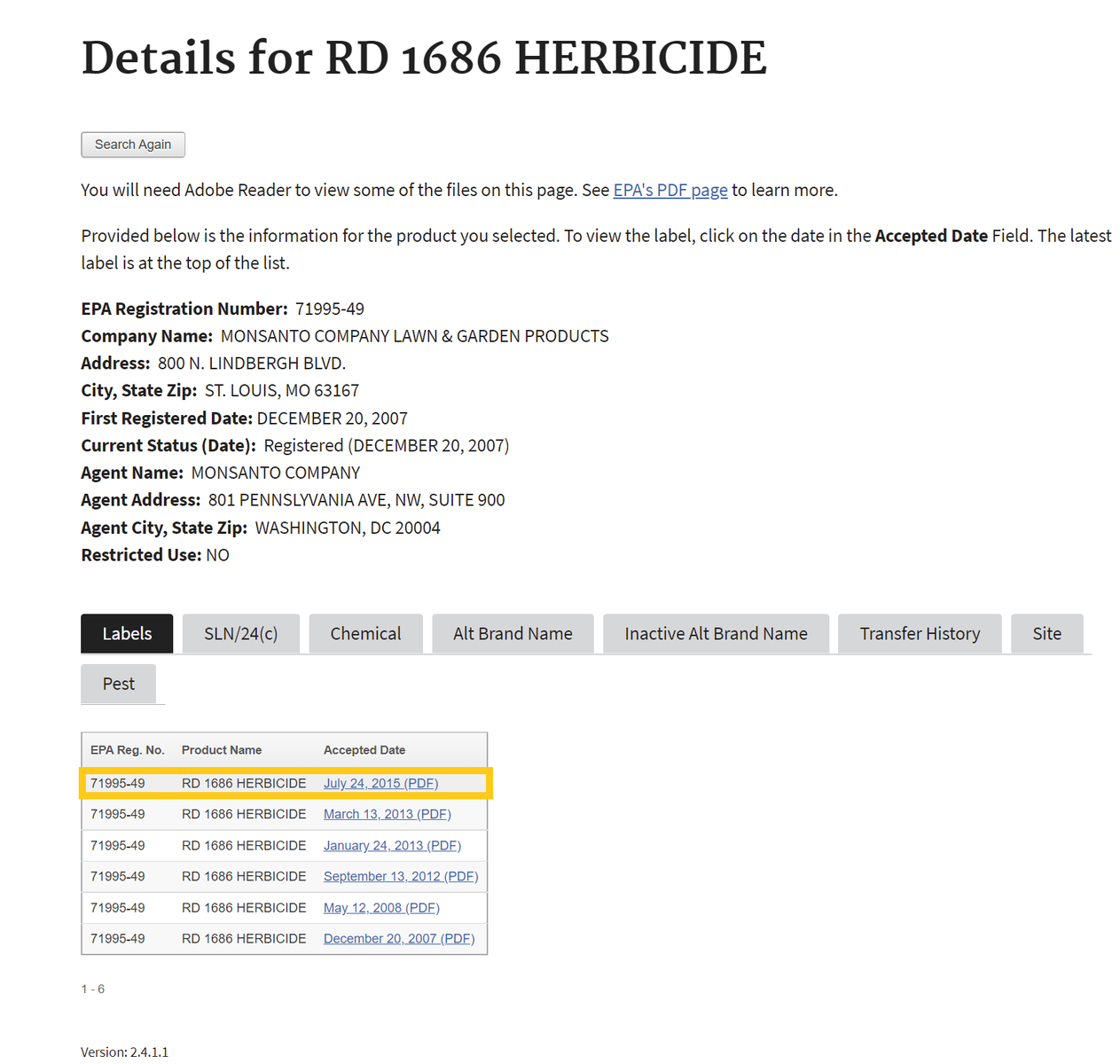
If one selects the chemical ingredients tab, skip to Step 4 . If not, proceed to step number 3 - To find the active ingredient(s) on the label, search for the page in the document containing the date of registration. Usually, the active ingredients section occurs within the first few pages of the label document.
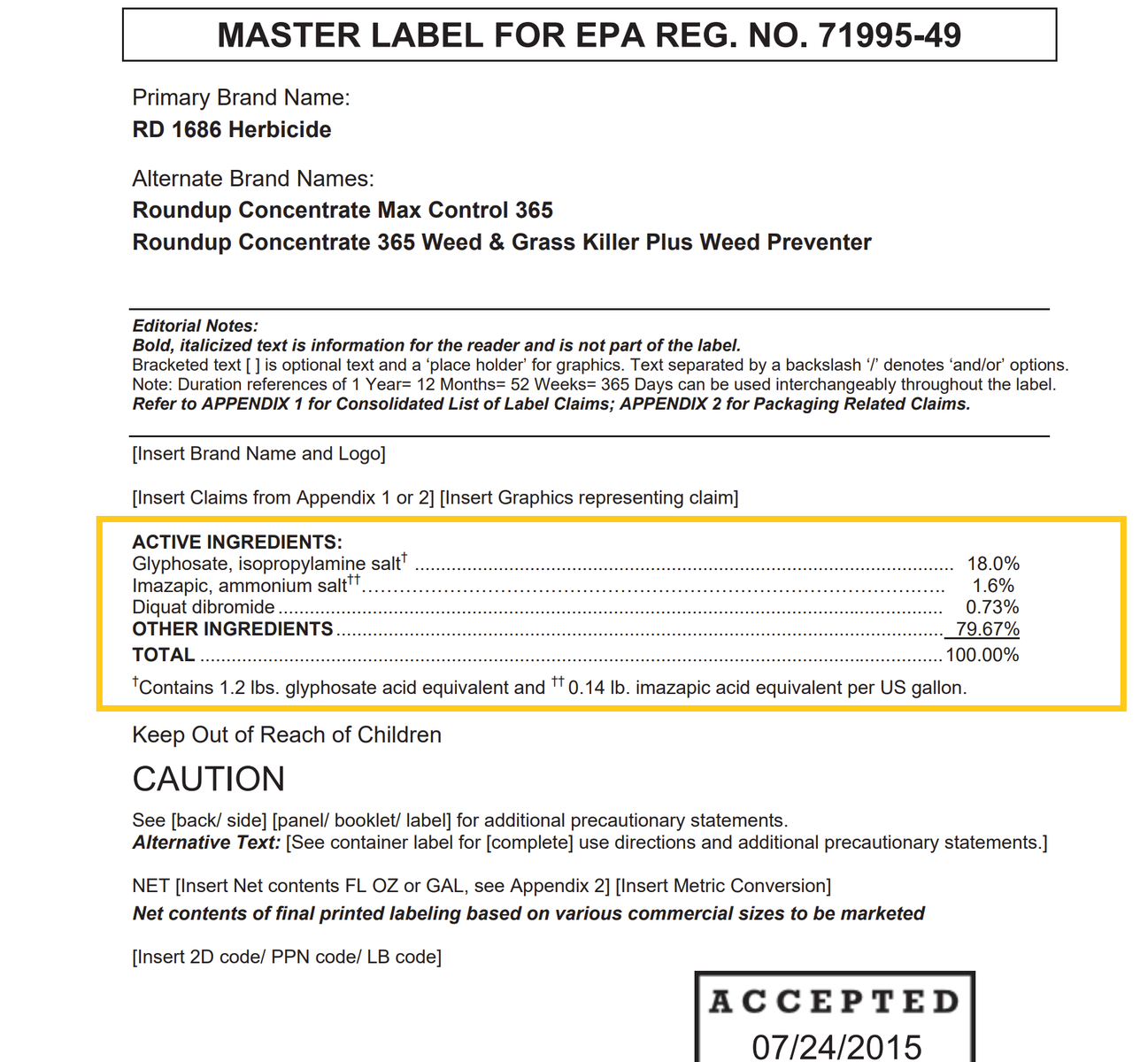
- Return to the Beyond Pesticides Gateway and search for the active ingredient name in the yellow box to the right or from the list below.
Abamectin/Avermectin B1
General Information
- Fact Sheet: Abamectin.pdf
- Product Names:
- Chemical Class: Macrocyclic lactone compounds
- Uses: Insecticide, miticide, nematicide for use on various agrucultural uses: fruits, vegetables, legumes, herbs, cotton, tree nuts; and non-agricultural uses: forestry, ornamentals, lawns, turf, transportation facilities, food/feed processing,distribution facilities, dairy cattle,
- Alternatives: Organic Agriculture
- Beyond Pesticides rating: Toxic
Health and Environmental Effects
- Cancer: Not documented
- Endocrine Disruption: Not documented
- Reproductive Effects: Yes (4, 27)
- Neurotoxicity: Yes (4)
- Kidney/Liver Damage: Not documented
- Sensitizer/ Irritant: Yes (27)
- Birth/Developmental: Yes (11, 21, 27)
- Detected in Groundwater: Not documented
- Potential Leacher: Not documented
- Toxic to Birds: Not documented
- Toxic to Fish/Aquatic Organisms: Yes (4, 8, 27)
- Toxic to Bees: Yes (4, 8)
Residential Uses as Found in the ManageSafe™ Database
Additional Information
- Regulatory Status:
- Supporting information:
- Extoxnet Abamectin Factsheet (Extension Toxicology Network)
- PAN Pesticides Database: Abamectin (Pesticide Action Network)
- Studies:
- Immune response of Brazilian farmers exposed to multiple pesticides . Jacobsen-Pereira, C.H. et al. (2020) ‘Immune response of Brazilian farmers exposed to multiple pesticides’, Ecotoxicology and Environmental Safety, 202, p. 110912. doi:10.1016/j.ecoenv.2020.110912.
- A Th2-type immune response and low-grade systemic inflammatory reaction as potential immunotoxic effects in intensive agriculture farmers exposed to pesticides . Lozano-Paniagua, D. et al. (2024) ‘A th2-type immune response and low-grade systemic inflammatory reaction as potential immunotoxic effects in intensive agriculture farmers exposed to pesticides’, Science of The Total Environment, 938, p. 173545. doi:10.1016/j.scitotenv.2024.173545.
- Transport mechanisms of pesticide mixtures impairing intestinal barrier function in mice. Liu, Z. et al. (2025) Transport mechanisms of pesticide mixtures impairing intestinal barrier function in mice, Pesticide Biochemistry and Physiology. Available at: https://www.sciencedirect.com/science/article/abs/pii/S0048357525000690.
- ROS generation and DNA damage contribute to abamectin-induced cytotoxicity in mouse macrophage cells. Liang, Y., Dong, B., Pang, N., & Hu, J. (2019). ROS generation and DNA damage contribute to abamectin-induced cytotoxicity in mouse macrophage cells. Chemosphere, 234, 328–337. https://doi.org/10.1016/j.chemosphere.2019.06.031
- Assessment of genetic damage levels in agricultural workers exposed to pesticides in Paraíba, Brazil. Carvalho-Gonçalves, L. et al. (2025) Assessment of genetic damage levels in agricultural workers exposed to pesticides in Paraíba, Brazil, Environmental Toxicology and Pharmacology. Available at: https://www.sciencedirect.com/science/article/abs/pii/S1382668925000900.
- Assessment of Avermectins-Induced Toxicity in Animals. Salman, Muhammad, Rao Zahid Abbas, Khalid Mehmood, Riaz Hussain, Sehar Shah, Mehwish Faheem, Tean Zaheer, Asghar Abbas, Bernardo Morales, Ina Aneva, and et al. 2022. "Assessment of Avermectins-Induced Toxicity in Animals" Pharmaceuticals 15, no. 3: 332. https://doi.org/10.3390/ph15030332
- The effect of abamectin exposure on gametogenesis in zebrafish. Bağdatli, S., Yön Ertuğ, N.D. The effect of abamectin exposure on gametogenesis in zebrafish. Sci Rep 15, 9038 (2025). https://doi.org/10.1038/s41598-025-93638-6
- Effects of Avermectins on the Environment Based on Its Toxicity to Plants and Soil Invertebrates—a Review. de Souza, R.B., Guimarães, J.R. Effects of Avermectins on the Environment Based on Its Toxicity to Plants and Soil Invertebrates—a Review. Water Air Soil Pollut 233, 259 (2022). https://doi.org/10.1007/s11270-022-05744-0
- Negative effects of abamectin on soil microbial communities in the short term. Qiu D, Xu N, Zhang Q, Zhou W, Wang Y, Zhang Z, Yu Y, Lu T, Sun L, Zhou N-Y, Peijnenburg WJGM and Qian H (2022) Negative effects of abamectin on soil microbial communities in the short term. Front. Microbiol. 13:1053153. doi: 10.3389/fmicb.2022.1053153
- Forecasting of Dangerous Influence of Avermectin Insecticides to Human Organism Using Surface and Groundwater for Drinking. Antonenko, Anna & Vavrinevych, O. & Shpak, Bohdan & Omelchuk, Sergii. (2021). Forecasting of Dangerous Influence of Avermectin Insecticides to Human Organism Using Surface and Groundwater for Drinking. Environmental Research, Engineering and Management. 77. 59-66. 10.5755/j01.erem.77.1.23706.
- Abamectin causes cardiac dysfunction in carp via inhibiting redox equilibrium and resulting in immune inflammatory response and programmed cell death. Zhao, P., Wang, Y., Yang, Q. et al. Abamectin causes cardiac dysfunction in carp via inhibiting redox equilibrium and resulting in immune inflammatory response and programmed cell death. Environ Sci Pollut Res 30, 29494–29509 (2023). https://doi.org/10.1007/s11356-022-24004-6
- Abamectin promotes behavior changes and liver injury in zebrafish. Santos, Keiza Priscila Enes Dos et al. “Abamectin promotes behavior changes and liver injury in zebrafish.” Chemosphere vol. 311,Pt 1 (2023): 136941. doi:10.1016/j.chemosphere.2022.136941
- Avermectin induces carp neurotoxicity by mediating blood-brain barrier dysfunction, oxidative stress, inflammation, and apoptosis through PI3K/Akt and NF-κB pathways. Zhang, Tianmeng et al. “Avermectin induces carp neurotoxicity by mediating blood-brain barrier dysfunction, oxidative stress, inflammation, and apoptosis through PI3K/Akt and NF-κB pathways.” Ecotoxicology and environmental safety vol. 243 (2022): 113961. doi:10.1016/j.ecoenv.2022.113961








.png)
